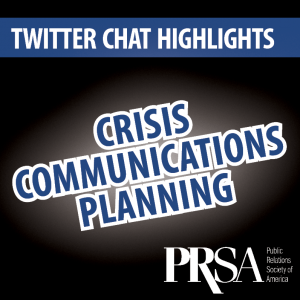It was an undercover drug bust gone bad.
In the early morning hours of January 3, 2004, Police Detective Darren Richards (not his real name) was about to arrest a suspect who had allegedly tried to sell him narcotics in a convenience store parking lot. But 19-year-old Frederick Sizzle (also not his real name) decided he wasn’t going to be taken easily. They struggled. Richards drew his weapon. Sizzle tried to take it and an errant shot struck the pavement. Somehow Sizzle managed to fight Detective Richards off and he headed toward a nearby vehicle.
He never made it.
A few minutes later, Sizzle was dead with three bullets in his back.
The facts of the case are disputed. Detective Richards claimed he shot Sizzle out of self-defense when he thought he was reaching for a pistol. Eyewitnesses claim Sizzle never reached for anything and was in full retreat. A handgun was discovered in the waistband of Sizzle’s pants.
Additional facts: Frederick Sizzle was African American. Detective Darren Richards was Caucasian.
The case ignited a powder keg of racial tension in the city. The public was already on edge over a handful of previous police shootings that some said were questionable. As a result, local civil rights leaders scheduled weekly protests at police headquarters. They held several press conferences, along with Sizzle’s family, over a period of weeks, each hammering home their belief that Detective Richards was a trigger-happy, racist cop who was just looking for an excuse to shoot an African American. Before it was over, the riot gear was out, four protestors had been arrested and the police chief’s office window had been shattered.
The police department, on the other hand, refused to comment on a pending investigation. Detective Richards and his family refused to speak to the media on the advice of his attorney. The Commonwealth Attorney’s Office soon announced that a grand jury would be convened to determine whether Richards should be tried on murder charges.
* * *
That was the state of the case one Saturday weeks after the shooting. As an assignment editor at our local television news station, I had to find a story for our nightside crew, including a reporter and photographer, to cover. The choice seemed obvious: The day before, we’d received a press release from Detective Richard’s family indicating that a rally would be held in support of him. It looked as though we might finally be able to hear from his family to get their side of the story.
I quickly picked up the phone and dialed the contact number on the release. When a family member answered, I told them our news crew planned to be there and would love to speak with Richard’s friends and supporters.
His answer? I’m paraphrasing:
“We don’t want you there. We know how you hacks are in the liberal, drive-by media. You never want to tell our side of the story! All you want to do is trash the cops!”
I told him that the reason we hadn’t been able to tell their side of the story was because no one on their side would come forward to tell it, and that this would be the perfect opportunity to do just that.
“Yeah whatever,” he said (I’m paraphrasing again.) “We don’t want you anywhere on the property. It’s a closed-door meeting. Stay away from us!”
We did, and that night we ended up covering a different story that was so insignificant I can’t remember what it was. That conversation stands out to me as one of the more startling examples of how NOT to handle the media during a crisis. It was a bit confusing because (a) they had sent us a press release about the event, (b) nowhere on that release did it say it was a closed door event, and most importantly, (c) in the process of attempting to get their side of the story, we were accused of not being interested in getting their side of the story.
Did the conversation bias us toward the case one way or another? Certainly not.
Did it affect our ability to cover the story completely? It might have appeared that way to the viewer. When one side is talking while the other is mum, the tight-lipped often find public opinion rapidly turning against them.
When it comes to PR, there is a time for silence, but this wasn’t it.
How can folks who find themselves in similar situations respond more effectively?
1. Get a spokesperson. This doesn’t necessarily mean retaining the services of PR firm, but a good spokesperson has to have a basic understanding of the art of public relations. They also have to be able to build good relationships with the media. Sending conflicting messages and firing off accusations against them does nothing to accomplish that goal.
2. If you can’t comment on the case particulars, don’t—but say why. Some departmental policies or legal situations mandate silence, but the public often doesn’t understand this. In this case, the spokesman could have made this clearer: “Detective Richards is eager to explain what happened that night, but his hands are tied by police department policies that restrict public comments during internal investigations. He looks forward to the day when he’ll be able to talk more freely.”
3. Reach out to friends. He may not have been able to comment on what happened on the night in question, but Detective Richards was former U.S. Marine and a five-year police veteran. Perhaps there are citizens who could tell how his quick-thinking and brave response protected them from crime over the years. Perhaps Richards had African American friends and colleagues who could speak out in his defense and refute charges that he was racist. Friends, family members, old schoolmates, sports league teammates, fellow church members—all of these could work together, with the supervision of the spokesman, to paint a much more balanced picture in the mind of the public.
4. Get a good picture. When a major story like this one breaks, one of the first things the media is going to be asking for are pictures. They’ll want images of the suspect and any cops involved. In some cases, a single image can define an individual throughout any follow-up coverage in the weeks and months ahead. Whenever that story is mentioned, even in passing, stations will throw that image up. That can be a major problem if the only image the media has is an unflattering one—or worse yet—a mugshot. If this is the case, it’s important to have a more flattering picture and offer it to the media as an alternative on Day One.
5. Make sure statements or press releases are clear. When the media receives a news release, the immediate assumption is that the people sending the releases are looking for coverage. If you’re announcing a closed-door event, make sure the release makes it clear that it’s private and media will not be allowed on the premises. Otherwise, don’t send the release at all. Above all be truthful. Show the positive aspects of your case, but don’t spin or make dishonest statements.
“Detective Richards” was eventually tried for murder and found Not Guilty. He has since moved on with his life and his career. Had his supporters understood public relations more fully, his time in the limelight might have been less painful.
TRAVIS K. KIRCHER is a former TV news assignment editor and founder of WriteNow Creative Services LLC. He can be reached at tkircher@writenowcs.com.
 Specifically, we’d like to thank Valerie Merahn Simon, senior marketing executive and Director of Marketing Communications for Plymouth Rock Assurance. She is also the co-founder of the #HAPPO and #PRStudChat Twitter chats.
Specifically, we’d like to thank Valerie Merahn Simon, senior marketing executive and Director of Marketing Communications for Plymouth Rock Assurance. She is also the co-founder of the #HAPPO and #PRStudChat Twitter chats.


